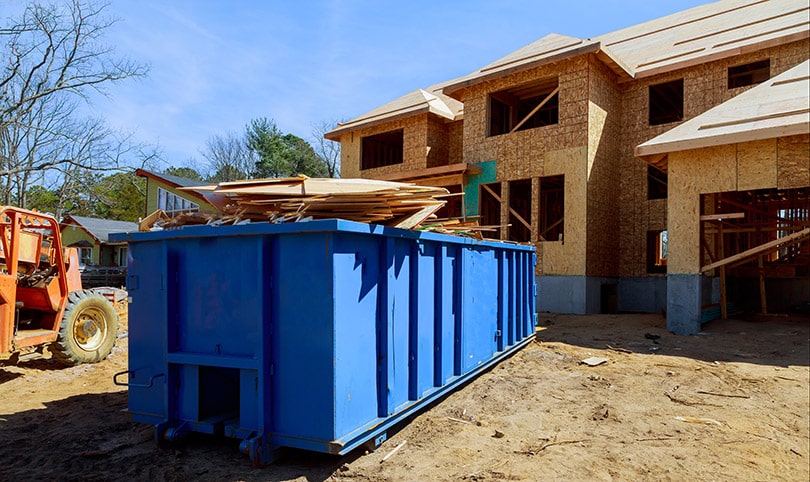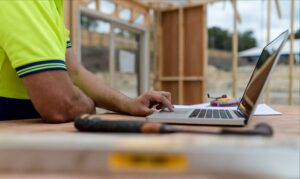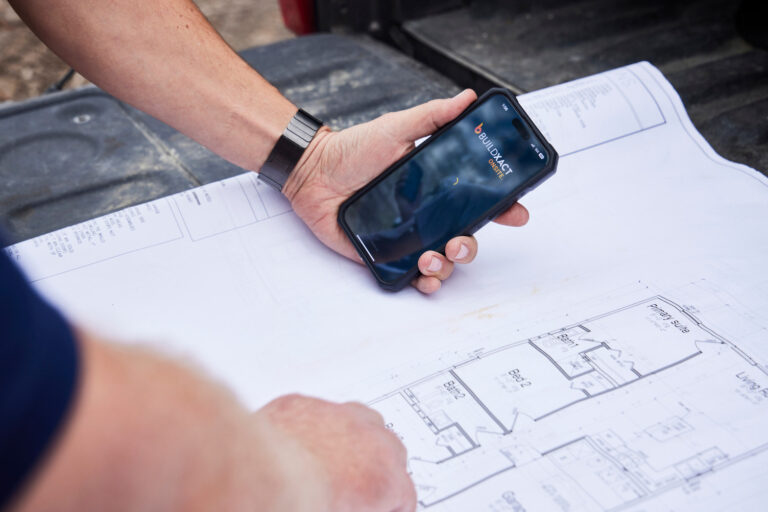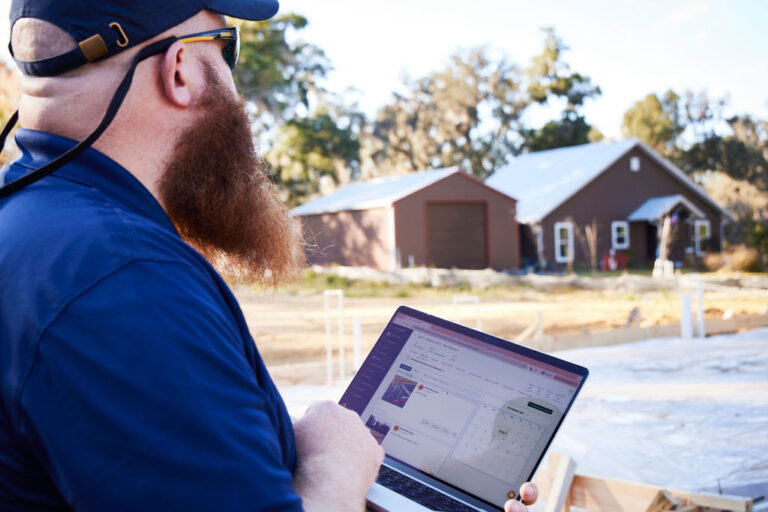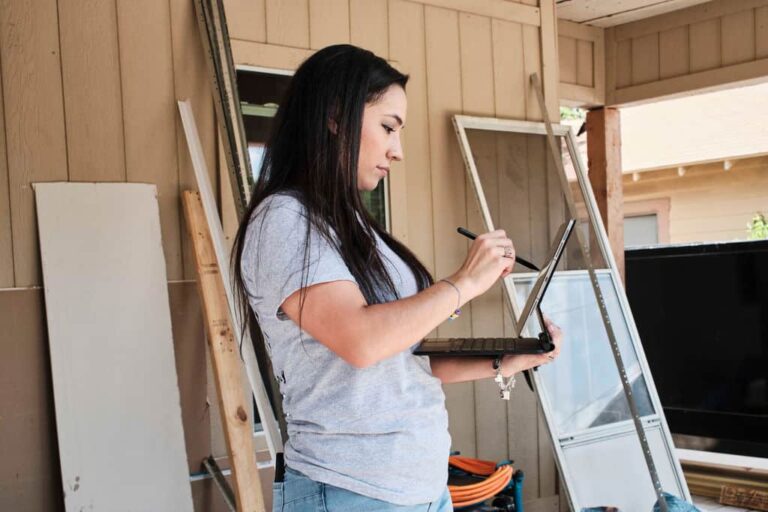In Australia, construction generates well over 20 million tonnes of waste each year, which makes it Australia’s greatest source of managed waste. Globally, building waste accounts for around half of the solid waste we generate.
Why does that matter? The production of building materials and their eventual disposal has an environmental impact at every stage, from extracting and processing the raw materials to manufacturing and transportation, as well as the eventual disposal.
Builders direct some waste on a construction site to local landfills, but a lot of waste historically, such as glass, tyres, regulated hazardous waste and plastic, exports to other countries. With many countries now banning that practice, and Australia cracking down on construction waste management and how the country disposes of waste, home builders have to rethink. They and other participants in the home construction industry must reconsider the way they manage construction and demolition waste. They must examine the potential of green waste removal practices, such as the reuse of lumber, appliances and hardware.
Existing waste management policies in construction
At this point, Australia runs the risk of full landfills by 2025. To help forestall this, construction companies need to hop on the sustainable waste management train. Let’s first cover some basics of what government is doing to improve construction waste management.
Construction and demolition waste is any unwanted material the construction industry generates from the building process. It can encompass concrete, stone, broken equipment, bricks, chemically contaminated materials and building material packaging.
Legally, construction companies are required to recycle construction waste before they dispose of the rest. More importantly, there is a duty of care to manage waste effectively. The Environmental Agency manages and enforces this, and failure to comply with this can not only damage your reputation but can also bring hefty fines.
The national policy on environmental sustainability is to reuse it where possible. So, where waste can be avoided, it should be. A big part of that is managing material flows and using recycled materials where possible.
Why are policies to reduce waste on construction sites needed?
Excess construction and demolition waste is a danger to the environment, and construction site waste makes up so much of the waste, it cannot be ignored. It’s up to both the industry and individual companies to find more appropriate methods to manage these materials.
A lot of that waste the industry disposes of could be reused or recycled. But, a sustainable future is often overlooked for the sake of speed or perceived efficiency. As the popularity of sustainable building practices increases, creating a waste management plan is a necessity for every construction company.
Best Ways To Reduce Construction Waste
As you prepare your next waste management plan, know that you can do plenty to ensure the generation of less waste, proper waste disposal and protection of human health.
Minimising construction mistakes
One of the first and most effective ways to reduce waste is to minimise mistakes.
Mistakes are inevitable, but reducing them as much as possible will save on waste. If your crew is making consistent mistakes when it comes to cutting and measuring or using the wrong material, then you need to understand how training can help. Also, you can use a waste recording process to highlight what you are using and wasting and use it to show your employees how to operate more efficiently.
Ordering the wrong materials can also contribute to a waste problem. For example, mistakenly opting for something fundamental, like drywall, can create waste, as can opting for larger or longer pipes than necessary.
Ordering appropriate amounts of materials
While it is normal to order extra to address errors and changes, the accuracy of your order will ensure you waste fewer materials. An excellent quantity surveyor will play a major role in your ability to make accurate orders. The best part of ordering is that it its typically done as part of a larger planning effort, which we will discuss momentarily.
Working together with suppliers
The material suppliers you work with should align with your goals and intentions. Choose your suppliers wisely. Ensure they can cope with the size of your project; they can meet your customers’ preferences; they can be flexible; and they can help you meet sustainability goals.
Project planning reduces waste generated by construction sites
One of most far-reaching ways of reducing material waste and finding ways to spend less money is to plan.
Before you start a project, you have to build a plan. When you organise your projects properly you reduce mistakes and ensure materials and labor arrive on your construction sites when needed.
Ensure you have exact measurements so your orders are as accurate as possible. Carry out inventory checks regularly so you know exactly what you have and what you need to order. Part of the ordering process should involve accounting for potential waste on site.
Also, before the project begins, you need to train so that the crew can sort waste as they generate it. That way you can identify material that can be recycled and reused.
Recycling and reusing resources
The vast majority of construction waste that goes to landfill should be recycled. It will take more time to process, but it’s a necessity if you want to reduce your carbon footprint.
For many, they waste a lot of materials because it is just easier to waste them. However, you should establish a strong relationship with local reclamation yards because reusing your materials in the long run saves money. If you renovate a lot of old buildings, you also will find that a lot of the materials can be saved, whether for your own reuse, or by others.
If something is in good condition, store it safely for use later. Review the reuse bin to see what can be used immediately. For example, you may find a smaller piece of lumber, which means you don’t need to cut a fresh piece. Don’t forget—you can mulch unpainted (or unstained) chopping wood.
You can also advise subcontractors to check for scraps when they are at fabricating/cutting locations.
Proper storage of materials
Remember, you can’t take advantage of recycling if you have no way to properly store materials. Store your materials in a secure location at your construction sites, and in doing so, stack and cover masonry and opt for level blocking for lumber.
Not only will proper storage help you keep your supplies organised and easy to inventory, but it will also protect against damage.
Adopting environmentally sustainable building methods reduces waste
The purpose of sustainable building methods is to limit the environmental impact of the industry. In construction, advanced technology and best practices improve the overall use of project resources.
Focusing on technology, like job management software, and how it improves material purchasing is one of the more effective ways to build sustainably while helping to bring about a cleaner environment. As we have discussed, you can reduce waste by limiting the materials you use by improving your purchasing and separating items for reuse and recycling.
Improving material purchasing and choosing recycled or salvaged materials are easy ways to get started with managing construction sites more efficiently and building greener projects. But sustainable building practices go beyond using recyclable and renewable materials.
Reduce Packaging
A lot of waste is down to packaging; cardboard is a big part of that. Try asking your suppliers to reduce any nonessential packaging. Or you can order in bulk to avoid some of the individual packaging issues. You can also order materials that ship in returnable containers. If your items ship in containers you can’t return, use them to store materials. If they are of no use, consider donating them to community gardens, youth groups or shelters.
Donate Leftover Materials
If the debris you have leftover has gone straight to a landfill in the past, it’s time to reconsider. Before you load up an industrial-sized skip, consider what you can donate.
If you have already created bins on-site for reuse or recycling, then you are off to a wonderful start.
You can do more, though. You can donate hardware, appliances, fixtures, doors, shelves and other materials to a variety of organisations. All kinds of charity projects are happy to accept leftover materials and other items.
It’s nice to be nice, but if you plan to go to the trouble of donating, make sure you leverage the positive attention to build your firm’s reputation in the area. It’s something to shout about on your social media channels and websites, and this shows your customers and potential clients that you invest in your community.
Other benefits of reducing construction waste
Reducing waste is one of the big benefits of sustainable building methods. However, choosing sustainable building methods also promotes cost efficiency.
Those cost savings allow you to invest elsewhere, whether it’s in new job management software or higher wages for the crew. There’s also a decrease in time investment when it comes to material costs. If you are reusing or recycling materials, then you don’t need to spend as much on ordering new materials, and the right construction management software can reduce the time needed for material estimating and job quoting.
The time to plan your waste reduction efforts is now. The fewer materials you order, the less you throw away, which means you are saving money and operating more efficiently overall. And with the leftover materials you do have, donating them is a nice tax benefit.
Managing construction waste with construction management software
Many builders turn to construction management software to take the stress out of managing home building projects.
Construction software gives you the tools to produce more accurate estimates and track project budgets more accurately than you would with pen and paper. Plus, supplier integration with modern software means you’re always quoting with the most up-to-date material prices from your chosen suppliers.
If you’re searching for simple construction management software , try Buildxact and start improving how you work today.
Want more information? You can speak to one of our team members by booking a Buildxact demo.




